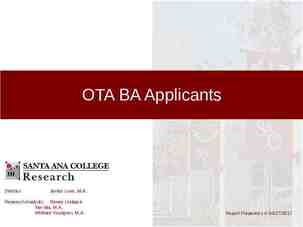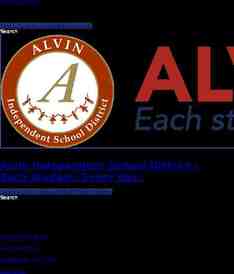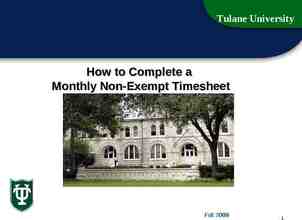Uniform Data Transfer and Connectable Objects On the way to
21 Slides227.50 KB

Uniform Data Transfer and Connectable Objects On the way to (ActiveX) Shangri-La

Uniform Data Transfer To provide a standard way of transferring data between components or applications COM defines the IDataObject interface. The purpose of the IDataObject interface is to allow any application that knows how to act as a client for this interface to access data provided from any application that supports it, e.g., uniform data transfer. IDataObject interface also provides a way to notify clients of recent changes in its component’s data.

Uniform Data Transfer Client IDataObject Data object IStream I Storage File Memory

IDataObject The IDataObject interface uses two structures to support the transfer of data. The first is: – FORMATETC describes the data being transferred: data format - could be the standard clipboard formats or custom formats defined by the data object and known by the client target device - details about the intended destination, e.g., printer with a given resolution role for which the data is designed - icon, thumbnail image, full screen bitmap how the data should be transferred - global memory, disk file, storage objects

IDataObject The IDataObject interface uses two structures to support the transfer of data. The second is: – STGMEDIUM describes where the data is stored: tag which tells a marshaler how the data is stored a union which indicates that the data is stored in: – bitmap – metafile – global memory – file – stream – storage

Data Object GetData SetData : DAdvise DUnadvise Data Consumer register get/set data Advise Sink IAdviseSink OnDataChange OnViewChange OnRename OnSave OnClose IDataObject notifications Data Source Data Object

IDataObject Methods GetData Renders the data described in a FORMATETC structure and transfers it through the STGMEDIUM structure. GetDataHere Renders the data described in a FORMATETC structure and transfers it through the STGMEDIUM structure allocated by the caller. QueryGetData Determines whether data object is capable of rendering data described in the FORMATETC structure. GetCanonicalFormatEtc Provides a potentially different but logically equivalent FORMATETC structure. SetData Provides source data object with data described by a FORMATETC structure and STGMEDIUM structure.

IDataObject Methods (continued) EnumFormatEtc Creates and returns a pointer to an object to enumerate the FORMATETC supported by the data object. DAdvise Creates a connection between a data object and an advise sink so the advise sink can receive notifications of changes in the data object. DUnadvise Destroys a notification previously set up with the DAdvise method. EnumDAdvise Creates and returns a pointer to an object to enumerate the current advisory connections.

Notifications It may be important for the data object to notify a client of changes in its data content or views. The IAdvise interface was designed to support notification of the client by data objects in a general way (more general than the IDataObject interface): – notify and get new data to the client – notify the client of changes in view or data source

IAdviseSink Methods OnDataChange Advises that data has changed. Uses FORMATETC and STGMEDIUM to pass data to client. OnViewChange Advises that view of object has changed. Uses a DVASPEC enumeration to define the view, e.g., content, thumbnail, icon, . OnRename Advises that name of object has changed. OnSave Advises that object has been saved to disk. OnClose Advises that object has been closed.

Data Transfer Using IAdvise Interface ISpecifyData Client (consumer) IDataObject IAdviseSink Data Object (source)

Uniform Data Transfer using Notification Referring to the diagram on the preceding page: – The client specifies to the data object which data it is interested in using a custom interface called ISpecifyData. – The client passes a pointer to its IAdviseSink interface to the data object. – Data object notifies client of a change using IAdviseSink::OnDataChange

Connectable Objects Connectable objects support interfaces to allow two-way communication with one or more clients. Clients talk to the connectable object in the usual way, e.g., by getting a pointer to one of its interfaces using CoCreateInstance and QueryInterface. Each connectable object provides connection points for specific interfaces, defined by the connectable object at design time. The connectable object’s clients implement the interfaces used by connectable objects to talk back.

Connectable Objects Client (Event consumer) EnumConnectionPoints FindConnectionPoint IConnectionPointContainer returns IID sends sink pointer breaks connection event sink GetConnectionInterface GetConnectionPointContainer Advise Unadvise EnumConnections IConnectionPoint Outgoing Interface IConnectionPoint event sink Outgoing Interface Connectable Object (Event Source) Connection Point (event source) Connection Point (event source)

Establishing Two-way Connections The IConnectionPointContainer interface must be supported by every connectable object. Its purpose is to allow clients to discover what outgoing (client) interfaces the connectable object supports and get a pointers to them. Once the client has a pointer to a connection point object for its interface that the connectable object will use it must then send a pointer to that interface to the connection point object. It does that using the IConnectionPoint interface.

IConnectionPointContainer Provided so clients can learn which outgoing (client) interfaces the object supports. Each of these supported client interfaces is represented with the connectable object by a separate connection point object. Connection point objects handle only one type of outgoing interface (they know how to call that interface’s methods) and also must provide an interface called IConnectionPoint. The connectable object’s clients must provide a sink object that implements the outgoing interface.

IConnectionPointContainer Interface EnumConnectionPoints Returns an object to enumerate all the connection points supported in the connectable object. FindConnectionPoint Returns a pointer to the IConnectionPoint interface for a specified connection point.

IEnumConnectionPoints Interface IEnumConnectionPoints::Next Enumerates the next cConnections elements (IConnectionPoint pointers) in the enumerator's list, returning them in rgpcn along with the actual number of enumerated elements in pcFetched. The enumerator calls IConnectionPoint::AddRef for each returned pointer in rgpcn, and the caller is responsible for calling IConnectionPoint::Release through each pointer when those pointers are no longer needed. E NOTIMPL is not allowed as a return value. If an error value is returned, no entries in the rgpcn array are valid on exit and require no release. IEnumConnectionPoints::Skip Instructs the enumerator to skip the next cConnections elements in the enumeration so that the next call to IEnumConnectionPoints::Next will not return those elements. IEnumConnectionPoints::Reset Instructs the enumerator to position itself at the beginning of the list of elements. There is no guarantee that the same set of elements will be enumerated on each pass through the list, nor will the elements necessarily be enumerated in the same order. The exact behavior depends on the collection being enumerated. It is too expensive for some collections, such as files in a directory, to maintain a specific state. IEnumConnectionPoints::Clone Creates another connection point enumerator with the same state as the current enumerator to iterate over the same list. This method makes it possible to record a point in the enumeration sequence in order to return to that point at a later time. The caller must release this new enumerator separately from the first enumerator.

IConnectionPoint With the IConnectionPoint interface a client starts, or terminates, an advisory loop with the connectable object and the client’s own sink. The client can also use this interface to get an enumerator object with the IEnumConnections interface to enumerate the connections that it knows about.

IConnectionPoint Interface GetConnectionInterface Returns the IID of the outgoing interface managed by this connection point. GetConnectionPointContainer Returns the parent (connectable) object's IConnectionPointContainer interface pointer. Advise Creates a connection between a connection point and a client's sink, where the sink implements the outgoing interface supported by this connection point. Unadvise Terminates a notification previously set up with Advise. EnumConnections Returns an object to enumerate the current advisory connections for this connection point.

IEnumConnections IEnumConnections::Next Enumerates the next cConnections elements (i.e., CONNECTDATA structures) in the enumerator's list, returning them in rgpcd along with the actual number of enumerated elements in pcFetched. The caller is responsible for calling CONNECTDATA.pUnk- Release for each element in the array once this method returns successfully. If cConnections is greater than one, the caller must also pass a non-NULL pointer to pcFetched to get the number of pointers it has to release. E NOTIMPL is not allowed as a return value. If an error value is returned, no entries in the rgpcd array are valid on exit and require no release. IEnumConnections::Skip Instructs the enumerator to skip the next cConnections elements in the enumeration so that the next call to IEnumConnections::Next will not return those elements. IEnumConnections::Reset Instructs the enumerator to position itself at the beginning of the list of elements. There is no guarantee that the same set of elements will be enumerated on each pass through the list. It depends on the collection being enumerated. It is too expensive for some collections, such as files in a directory, to maintain a specific state. IEnumConnections::Clone Creates another connection point enumerator with the same state as the current enumerator to iterate over the same list. This method makes it possible to record a point in the enumeration sequence in order to return to that point at a later time. The caller must release this new enumerator separately from the first enumerator.






